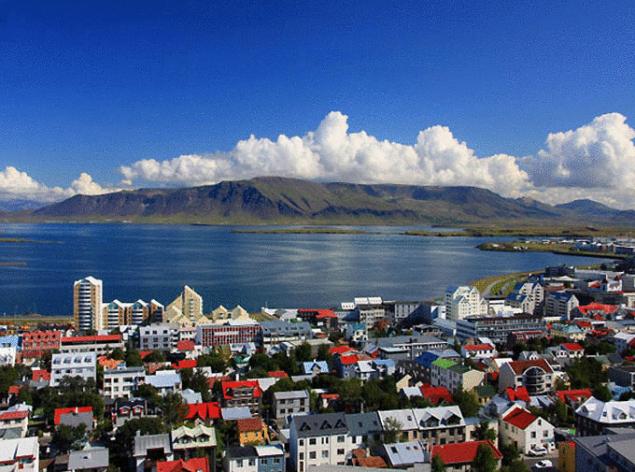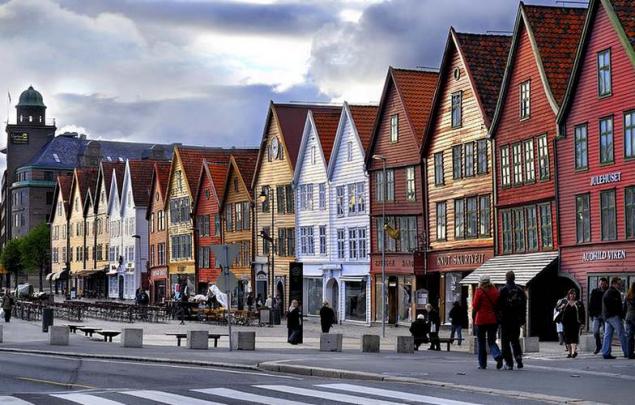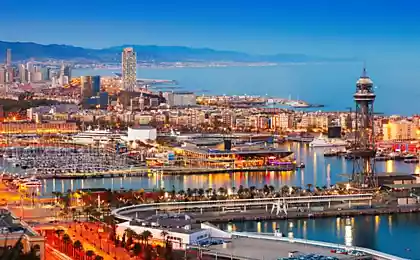577
The top 10 most energy efficient cities in the world
First place in the rating was headed by the Reykjavik (Iceland). The city for its necessary uses renewable energy sources – hydroelectric and geothermal sources. To completely abandon fossil fuels is planned by 2050.

In second place is Vancouver (Canada). In 2012, Vancouver presented a plan of action to become the most sustainable city in the world by 2020. Hydropower already accounts for 90% of the energy while the remaining 10% provided such updated sources like wind, sun and Volgaenergo. In addition, the city of some of the lowest in carbon emissions per capita.
Third place was awarded to Copenhagen (Denmark). This city is considered one of the world leaders in clean technologies due to the huge floating wind farm, and a large number of cyclists (more than one third of residents use a Bicycle every day). In the context of the stated city goal of becoming by 2025 the first capital, does not emit carbon dioxide, throughout the city has installed green roofs that not only insulate the building but also slower to absorb water, which reduces pressure on the drainage system.
The next place in Oslo (Norway). Here, 80% of the heating systems working on renewable energy — mostly biomethane derived from waste. In the next 10 years the city is going to increase this figure to 100%. The city also uses a "smart lamp" and by 2030 it hopes to reduce carbon emissions by 50% in the city, and by 2050 — to completely stop the release of carbon dioxide throughout the country.

Fifth place is the capital of England is London. Albion began to improve energy efficiency since 2000-ies. Action plan 2007 in connection with climate change included the transition of 25% of electricity production to lower-cost, local sources, and reducing carbon dioxide emissions by 60% in the next 20 years. The plan also presents incentives for more fuel-efficient homes for residents, as well as high taxes on cars (excluding electric vehicles and hybrids).
Among the energy efficient cities included Malme (Sweden). From 2008 to 2012 the country managed to reduce the consumption of fossil fuels by 25%. Part of the city receives energy from renewable sources.
Among U.S. cities in the rankings included Boston, San Francisco, Portland and new York. Boston entered the ranking because of its cooperation programmes in the municipal area. San Francisco recycles 77% of its waste, devotes almost 20% of their land for green spaces and is a leader in the field of electric vehicles.
Portland for a long time remains one of the most environmentally friendly cities in the United States. New York is a leader in the involvement of the population, construction programs, utilities, and access to energy data.
Source: greenevolution.ru

In second place is Vancouver (Canada). In 2012, Vancouver presented a plan of action to become the most sustainable city in the world by 2020. Hydropower already accounts for 90% of the energy while the remaining 10% provided such updated sources like wind, sun and Volgaenergo. In addition, the city of some of the lowest in carbon emissions per capita.
Third place was awarded to Copenhagen (Denmark). This city is considered one of the world leaders in clean technologies due to the huge floating wind farm, and a large number of cyclists (more than one third of residents use a Bicycle every day). In the context of the stated city goal of becoming by 2025 the first capital, does not emit carbon dioxide, throughout the city has installed green roofs that not only insulate the building but also slower to absorb water, which reduces pressure on the drainage system.
The next place in Oslo (Norway). Here, 80% of the heating systems working on renewable energy — mostly biomethane derived from waste. In the next 10 years the city is going to increase this figure to 100%. The city also uses a "smart lamp" and by 2030 it hopes to reduce carbon emissions by 50% in the city, and by 2050 — to completely stop the release of carbon dioxide throughout the country.

Fifth place is the capital of England is London. Albion began to improve energy efficiency since 2000-ies. Action plan 2007 in connection with climate change included the transition of 25% of electricity production to lower-cost, local sources, and reducing carbon dioxide emissions by 60% in the next 20 years. The plan also presents incentives for more fuel-efficient homes for residents, as well as high taxes on cars (excluding electric vehicles and hybrids).
Among the energy efficient cities included Malme (Sweden). From 2008 to 2012 the country managed to reduce the consumption of fossil fuels by 25%. Part of the city receives energy from renewable sources.
Among U.S. cities in the rankings included Boston, San Francisco, Portland and new York. Boston entered the ranking because of its cooperation programmes in the municipal area. San Francisco recycles 77% of its waste, devotes almost 20% of their land for green spaces and is a leader in the field of electric vehicles.
Portland for a long time remains one of the most environmentally friendly cities in the United States. New York is a leader in the involvement of the population, construction programs, utilities, and access to energy data.
Source: greenevolution.ru























